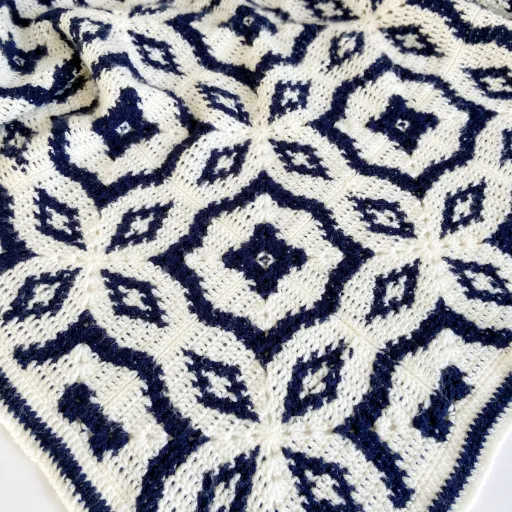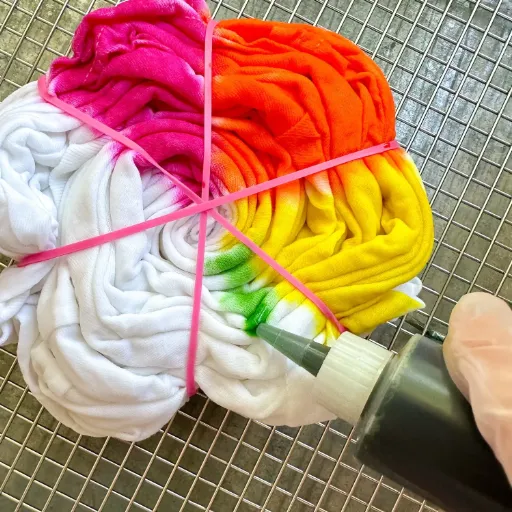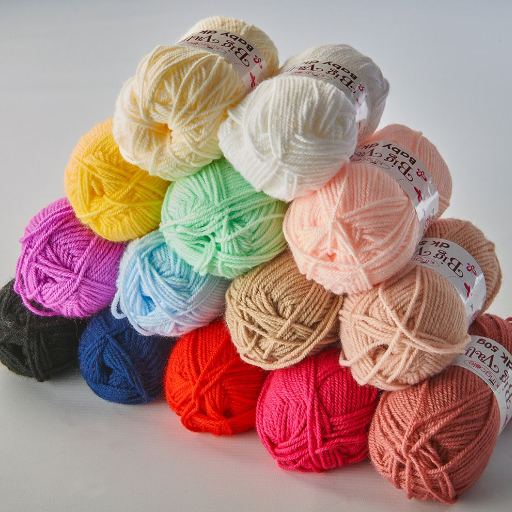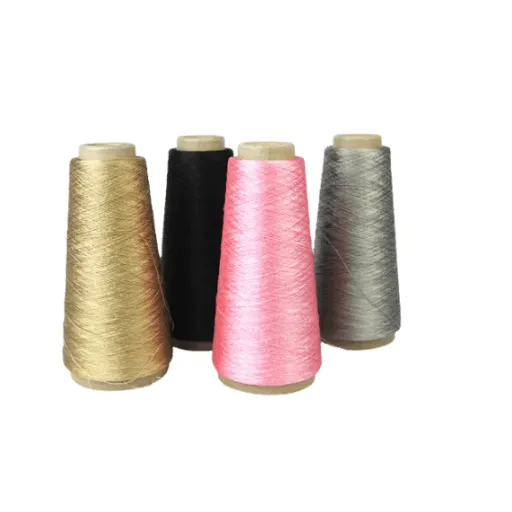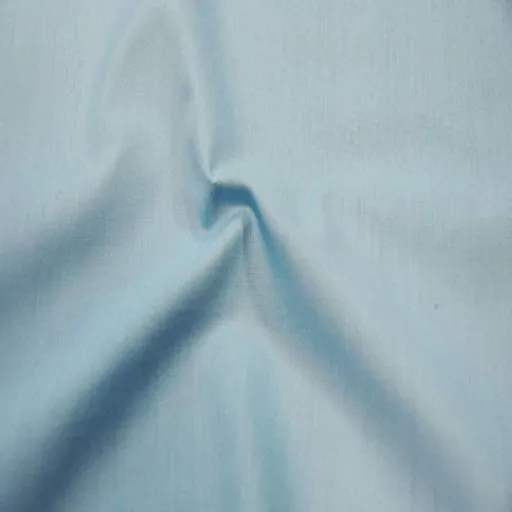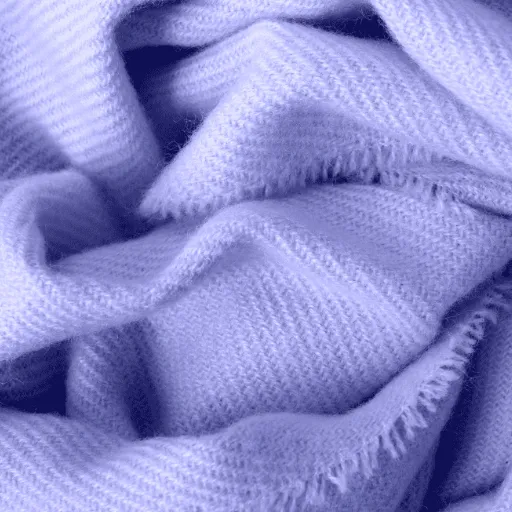One of the most aggravating things with any fabric is pilling, and polyester is no exception. You are not alone if you have seen those irritating small fuzz balls on your favorite polyester garments or upholstery. But what causes polyester to pill, and is there any way to prevent it? This blog post offers an in-depth examination of the science behind pilling, exploring why polyester fabrics are prone to pilling and providing measures to mitigate or manage this common issue. Fashion-savvy home decor buffs, or simply those who appreciate sturdy and long-lasting fabrics, this guide will provide you with valuable insights to better understand and care for polyester fabrics.
What is Pilling?
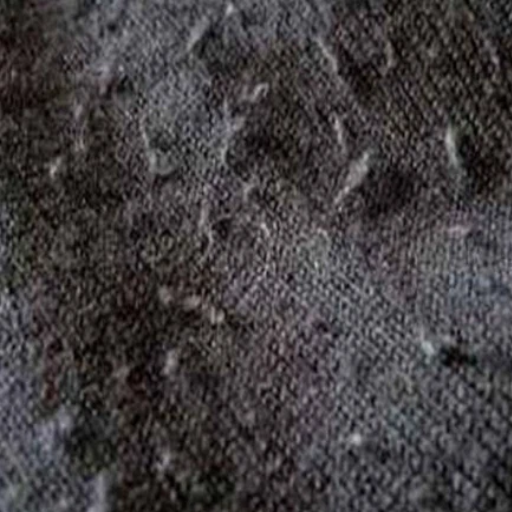
Pilling makes those fuzz-like balls on the fabric’s surface. It originates from the loose fibers in the material, unable to hold one another together under friction or wear. The pills are most noticeable in areas of a garment or fabric that are usually rubbed, such as under the arms, on seams, or upholstery cushions. Although pilling does not necessarily mean the product was cheap, it can surely change the way the fabric appears and feels over time.
Definition of Pilling
Pilling occurs as a result of normal wear and tear on the fabric. The fibers within textiles tend to loosen over time, especially when exposed to repeated friction. The type of material, frequency of use, and the method of laundering all contribute to pilling. Synthetics, such as polyester or blends, tend to pill more frequently since the fibers are strong and hold the pills rather than allowing them to fall off. Natural fibers like cotton or wool can also pill, but perhaps less conspicuously so. Proper care, on the other hand, can diminish reactive pilling, such as gentle washing combined with avoiding excessive abrasion.
Why Pilling Happens in Polyester
Pilling in polyester materials occurs due to the synthetic nature of its fibers and their high resistance to breaking. Unlike natural fibers that may have loose ends here and there, polyester fibers firmly grab pills from the surface of the fabric. Another annoying fact about polyester fabrics is that they tend to have a closely knit structure, which results in greater friction during regular use of clothing and, consequently, more fiber entanglement. Frequent washing, drying in dryers with high heat, and other abrasive activities can accelerate the pilling of polyester. To minimize the accumulated effect on the garments, it is advisable to wash polyester clothes inside out on gentle cycles and air-dry them to preserve their appearance.
Impact of Pilling on Polyester Clothing
Pilling affects the look and feel of polyester clothing, contributing to garments appearing worn out and less attractive. Recent studies indicate that searches related to “how to remove pilling from clothes” have increased over time, indicating a growing concern from consumers about maintaining garment quality. Additionally, consistent pilling may ultimately lead to a dent in customer satisfaction, particularly with high-performance or fashion-forward polyester apparel. This problem highlights the need for care interventions and innovative fabric solutions that can prevent pilling and consistently meet customer expectations.
Why is Polyester Prone to Pilling?
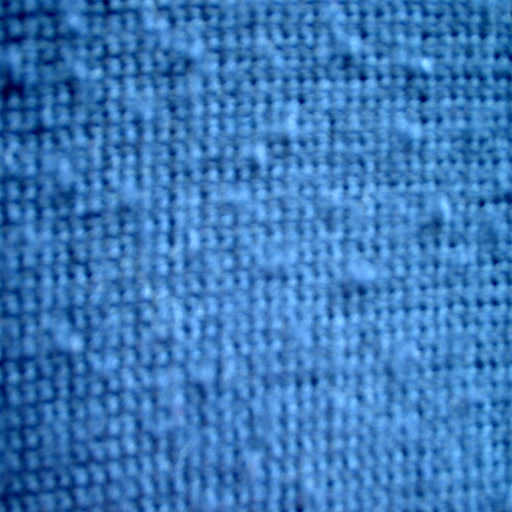
Polyester is often blamed for pilling because its fibers are strong and resilient, and loose fibers tend to tangle rather than break free. This resilience creates conditions in which friction-washing, wearing, or some form of surface contact encourages these small balls of fiber to form on the fabric’s surface. Its synthetic nature and smooth surface could result in easier fiber rubbing and the accumulation of pills over time.
Characteristics of Polyester Yarns
Polyester yarns are valued for their durability and lightness, as they resist shrinking and stretching. They offer considerable elasticity applicable to targets ranging from clothing to home textiles. Their smooth finish gives polyester yarn strength and compatibility with other fibers. Additionally, these yarns dry quickly and exhibit an anti-wrinkle property, making them practical for everyday use; however, care is advised, as their synthetic nature can lead to pilling, especially in situations of continuous friction or multiple washes.
Comparison with Other Synthetic Fibers
Here’s a concise table comparing Polyester with other synthetic fibers based on the latest information:
| Fiber | Durability | Pilling Tendency | Moisture-Wicking | Softness | Common Uses |
|---|---|---|---|---|---|
| Polyester | High | Moderate to High | Good | Moderate | Clothing, upholstery, activewear |
| Nylon | Very High | Moderate | Excellent | Soft | Sportswear, hosiery, outdoor gear |
| Acrylic | Moderate | High | Poor | Soft | Sweaters, blankets, upholstery |
| Spandex | Moderate | Low | Excellent | Very Soft | Activewear, swimwear, compression |
| Rayon | Low to Moderate | Low | Poor | Very Soft | Dresses, blouses, home textiles |
Pilling Phenomenon in Polyester vs. Natural Fibers
Pilling, the undesired small fabric balls that develop on the textile surface, is itself a common problem, with the type of material sometimes being a factor, and at other times its use. As a strong and resilient synthetic fiber type, polyester is prone to pilling. The fiber strands do not break easily, and instead, they become loose at points, and their tangled antithesis forms pills that get deposited on the fabric. Naturally, fibers such as cotton or wool, which have weaker tensile strength, are more likely to break off and become loose than pills on the surface. Additionally, the highly hydrophobic nature of polyester and the smoothness of the fiber surface enable the pills to adhere longer to the fabric.
Yet, consumer preference for polyester’s durability, affordability, and broad applicability often outweighs the pilling issue. Although manufacturers have resorted to anti-pilling finishes and even blends of polyester with other fibers to counter this, natural fibers, on the other hand, while less likely to retain pills, still do not have the durability or long life of their synthetic counterparts, and thus present the trade-off between these fiber classes in textiles.
Factors Contributing to Pilling in Polyester
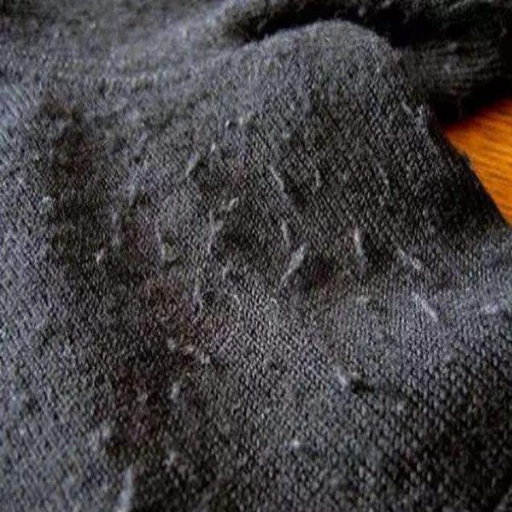
Pilling in polyester typically occurs during use or washing, resulting from friction and abrasion. Polyester synthetic fibers tend to form loose fibers on their surface when rubbed against other materials. These fibers interlock and compress into tiny balls known as pills. Moreover, the lightweight and smooth nature of polyester can facilitate this action, especially when subjected to frequent movement or rubbing against a coarser fabric.
Fiber Type and Weave
The type of fiber and weaving methods greatly determine the pilling susceptibility of polyester. Tightly woven fabrics are less susceptible to pilling than loosely woven ones, where the fibers are far less held in place. Additionally, blended fabrics composed of polyester and natural fibers, such as cotton or wool, exhibit varying pilling tendencies. Natural fibers tend to either disintegrate or break away from pilling, thereby sometimes rendering heavy pilling less likely on blended fabrics. Furthermore, advancements in textile production methods, including various weaves and coating techniques, have generally helped reduce pilling by enhancing fiber stability.
Usage and Friction Areas
Friction areas refer to regions on a fabric that receive more contact and abrasion in use and, thus, are prone to wear and pilling. A classic example is the underarms of garments: the repetitive movement during use tends to cause fabrics to wear or pill. Similarly, such abrasion processes occur to some degree on pants: while walking, the thighs rub against each other. Other external friction factors, such as bag straps rubbing against fabric or chairs, may increase pilling over time. High-use areas are a key consideration when selecting fabrics for durability, particularly for workwear or upholstery. Considering the intended performance and fabric structure together can massively aid users in preserving their materials and make overt visible wear less likely.
Effects of Washing and Drying on Pilling
Washing and drying conditions favor the formation of pills on a fabric. The abrasive action of washing machines, mostly during fast spin cycles, agitates the fibers of the fabric. Hotter water and stronger detergents are more injurious as they may help break down the fibers. Additionally, the tumbling action in dryers can cause pilling by friction between garments. To avoid pilling, use gentle wash cycles with cold water and detergents specifically designed for delicate fabrics. Clothes can be dried by air or using low heat in dryers to decrease friction and increase garment life.
How to Prevent Pilling on Polyester Clothing
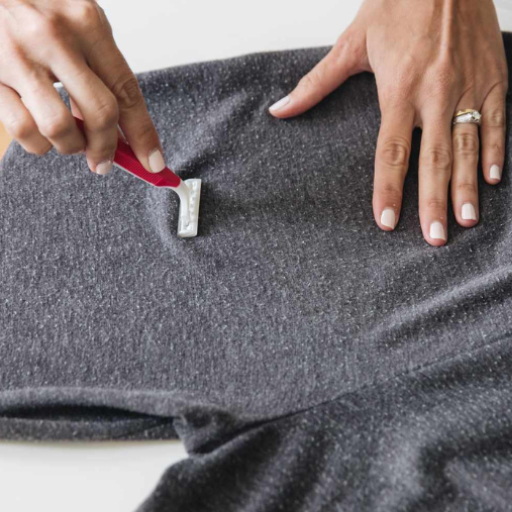
Essential Prevention Tips:
- Wash Inside Out – Wash the garments inside out to lessen abrasion to the outer surface.
- Choose a Gentle Cycle – Always select the delicate or gentle wash cycle to minimize agitation.
- Opt for Cold Water – Wash in cold water to prevent the fibers from weakening.
- Use Mild Detergent – Always select detergents made for delicate fabrics that won’t have a strong chemical effect on them.
- Avoid Overloading the Washer – Ensure ample room for clothing to move freely, reducing friction.
- Air Dry or Low Heat – Air dry whenever possible or opt for the lowest heat setting if drying clothes in a dryer.
- Brush or Shave Pilling – Pills formed can be removed gently using a fabric shaver or pilling comb.
Caring for Polyester Fabrics
Can polyester fabric shrink?
Polyester is an excellent synthetic fabric with exceptional durability, requiring some drying on lower dryer settings or air drying. However, suppose polyester is subjected to very high heat in the dryer on the highest-temperature setting. In that case, it may shrink slightly or get damaged.
How do you remove stains from polyester?
Removing stains from polyester fabric is relatively simple. Blot the stain with a damp cloth first to absorb excess residue; then apply stain remover or mild detergent to pre-treat the stained area. Wash in warm water, according to the care label instructions. Avoid bleaching polyester unless the fabric care label specifically states that the polyester is safe to bleach.
Is polyester environmentally friendly?
Polyester is derived from petroleum-based products and is therefore less sustainable than natural fibers. However, due to newer recycling technologies, polyester can now be produced from recycled materials, thereby significantly reducing its environmental impact. Thus, the use of recycled polyester should be considered a more environmentally friendly option.
Washing Tips to Prevent Pilling
Polyester fabrics require careful handling during washing to prevent pilling. The plan is always to turn the garment inside out; in other cases, there tends to be friction with other articles. Gentle cycle, cold wash: less agitation causes less damage to the fabric. Rough surfaces cause pills to pair cautiously with materials of a similar kind. Using milder detergents designed for delicate fabrics will also be suitable for polyester. Anything with high heat during drying will weaken the fibers and increase the chances of pilling. Air-drying or low tumble drying is preferable. This will preserve your garment and maintain its smooth, polyester-like appearance.
Protective Measures During Laundry
This is one question that is more or less apt to happen. A fabric softener can sometimes reduce the friction between fibers, lessening pilling in some cases. Overuse of fabric softener can also lead to a buildup of residues, particularly on synthetic fabrics like polyester. This buildup can either act as a magnet for lint or weaken the fibers over time. Instead, try using a gentle wash cycle in cold water while placing the garments in a laundry bag. It will shield the fabric and provide a cleaner, smoother finish, minus the use of any additives.
Solutions for Removing Pilling from Polyester
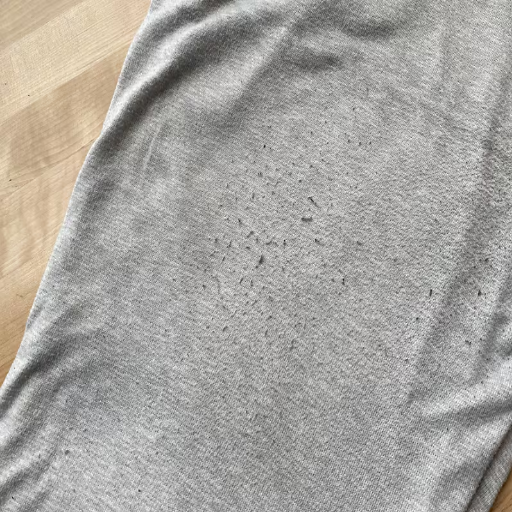
Effective Removal Methods:
Use a Fabric Shaver
Gently move this fabric-shaving or depilling tool over the surface to remove pilling from the fabric without causing any harm.
Employ a Razor
Work very carefully with a clean, sharp razor head when shaving the pills. Keep the fabric flat and work in manageable sections to avoid accidental damage.
Use Adhesive Tape or a Lint Roller
Press the adhesive tape or lint roller firmly onto the fabric and pull it off; the loose pills will come off along with it.
Wash with Care
Inside out and on a delicate cycle pale with cold water, the garment shall look for more pilling.
Hand-Pick Pills
For less area to be treated, dear pills by hand. This is time-consuming but precise when care is required.
All these treatments are straightforward and efficient, and can restore the smooth look of your polyester.
Using Fabric Shavers and Lint Rollers
Very gently, I keep the fabric shaver gliding on the surface of the garment to remove the pills effectively, taking care not to exert too much pressure that may damage the garment. For an instant remedy, I use a lint roller to pick loose pills and fibers off the clothes, preserving the smooth and polished look.
Specialized Detergents and Treatments
Such detergents are specially formulated to care for synthetic fabrics, such as polyester, ensuring the best care for these garments. Often, these detergents contain enzymes that break down oils, dirt, and residues without harming the delicate fibers of the fabric. Pre-treatment sprays or stain removers formulated for polyester can be used for stubborn stains, thereby preparing the fabric for effective washing. Using these products in conjunction with a cold or warm water setting is essential for modern garment care, as it helps prevent fading, shrinkage, and wear.
When to Replace Worn Polyester Garments
When polyester garments show irreparable signs of wear that affect functionality or appearance, they should be replaced. Usual signs include constant pilling that cannot be removed, fading of colors, thinning of materials, and loss of stretch at the hems and seams. A stain that simply would not come out, even after several thorough washes, is enough to render a garment unusable. Additionally, damage in the form of holes or tears that compromise the garment’s integrity should warrant replacement. With proper care, polyester can last several years on average; however, frequent wear, washing, or a lower quality garment will significantly impact its lifespan. It is good to give your polyester collection a once-over now and then to ensure you continue to maintain a practical and presentable wardrobe.
Comparing Polyester with Other Fabrics
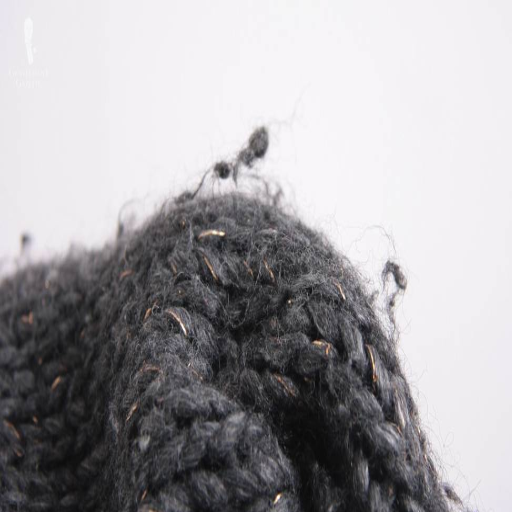
In comparison with other natural fabrics, such as cotton or wool, polyester is often chosen for its durability, wrinkle resistance, and lower cost. Cotton is breathable and soft, but it tends to shrink and wrinkle. In contrast, polyester maintains its shape and has a very low tendency to dye, fade, wear, or tear. Polyester, on the other hand, is lightweight, easy to take care of, and not subject to being attacked by moths. Hence, cotton or wool surpasses all kinds of polyester in breathability and comfort, more so when temperature issues arise. Still, polyester can contain odors; it’s just not very sustainable due to its synthetic nature. Its benefits versus drawbacks are versatility and ease of maintenance, making it a favorite for both casual wear and sports wear.
Pilling in Natural Fibers vs. Polyester
Pilling can be described as the formation of small hordes of fuzz-sized balls on the fabric surface, bearing the marks of wear and friction. Natural fibers, such as wool and cotton, tend to pill more easily because they are short and less uniform in construction, making them more susceptible to breakage and tangling. Polyester is less prone to pilling because it is a synthetic fiber; thus, its fibers tend to be longer and sturdier, thereby reducing the chances of breaking. However, when pilling does occur on polyester, the pills bind very tightly to the fabric, making their removal difficult compared to that of natural fibers. While fabric engineering has led to a significant reduction in pilling for both types of fibers, understanding the differences can aid in selecting the appropriate fabric for various usage and care requirements.
Impact of Blended Fabrics on Pilling
In the case of blended fabrics containing a mix of natural and synthetic fibers, the likelihood of pilling varies depending on the interaction between fibers. For instance, polyester-cotton blends tend not to pill as much as pure polyester because the cotton fibers, being less likely to hold onto pills, help balance the formation to some extent. In contrast, while nylon or polyester fibers may be present in a blend, the occurrence of harder pills will increase, as these materials tend to be very tough and abrasive. Modern studies have demonstrated that advanced weaving methods, combined with an anti-pilling finish, provide a practical approach to producing durable clothing and home textiles. Choosing high-quality blended fabrics and following the care instructions is always recommended to minimize the problem of pilling.
Reference Sources
Here are five academic and authoritative reference sources to verify the truthfulness of your article on “Do Polyester Pills?”.
- SAGE Journals – Study on Pilling Performance of Polyester-Cotton Blended Fabrics
Description: Using various factors, such as yarn twist, spinning process, and fabric density weaves, this study presents the pil performance of polyester-cotton blends. - ResearchGate – Study on Pilling Performance of Polyester-Cotton Blended Woven Fabrics
Description: The impact of fabric construction on pilling has been explored through structural studies. - NIScPR – Study of Pilling in Polyester/Cotton Blended Fabrics
Description: This paper aims to analyze how pilling behavior is modified by the extraordinary strength and ionic characteristics possessed by polyester. - ScienceDirect – Pilling Tendency Overview
Description: An insight into pilling ploys in different fabric blends is offered in this resource, along with a discussion about the ability of resin treatments to reduce them. - PubMed Central – The Influence of Finishing on the Pilling Resistance of Fabrics
Description: This study investigates pilling resistance of fabrics that is influenced by finishing treatments, mechanical and chemical, among other factors.
Frequently Asked Questions (FAQs)
What causes pilling in polyester fabrics?
Pilling is a common phenomenon that occurs when fibers on the surface of a fabric become tangled and form small balls, known as pills. This can occur due to friction caused by regular wear or washing, particularly in areas such as the armpits or between the thighs. Polyester, being a synthetic fiber, is particularly prone to this issue due to its tight weave and the fabric’s structure.
Does polyester pill more than other fabrics?
While all fabrics can experience pilling, polyester tends to pill more frequently due to its short fibers and the manufacturing process. However, the quality of the polyester can make a difference; high-quality polyester is often more resistant to pilling compared to lower-quality options. Fabrics made from materials such as cotton or wool fibers can also pill, but the extent of this phenomenon varies based on the fabric’s composition and weave.
How can I prevent pilling on my polyester clothing?
To prevent polyester pilling, consider selecting garments made from high-quality polyester and avoiding excessive friction during wear. Washing garments inside out and using gentle cycles can also help. Additionally, limit the use of fabric softeners, as they can break down fibers, making them more susceptible to pilling.
Can I remove pills from a polyester sweater?
Yes, you can remove pilling from a polyester sweater using a pill remover or a fabric shaver. These tools effectively cut away the pills without damaging the fabric. You can also use a lint roller or gently shave the surface with a razor, being careful not to harm the underlying fibers.
Is there a way to minimize pilling on fleece garments?
Minimizing pilling on fleece garments requires proper washing and care. Wash fleece items in cold water on a gentle cycle, and avoid using harsh detergents. Additionally, air drying instead of using a dryer can help maintain the integrity of the fibers and reduce the formation of new pills.
What materials are most resistant to pilling?
Fabrics made from synthetic fibers, such as high-quality polyester and acrylic fibers, are often more resistant to pilling compared to natural fibers. A tight weave can also enhance a fabric’s durability and longevity, making it less prone to pilling. However, even synthetic fabrics can experience pilling if not correctly cared for.
How do I treat pilling after it occurs?
If pilling has already occurred, using a pill remover or fabric shaver is the most effective way to treat it. Gently glide the tool over the fabric surface to remove pills without damaging the polyester material. Regularly maintaining your garments can help keep them looking fresh and free from pills.
Can washing affect the pilling of polyester garments?
Yes, washing can significantly affect the pilling of polyester garments. Using a harsh cycle or hot water can cause more friction, leading to increased pilling. It’s advisable to wash polyester items in cold water on a gentle cycle to limit friction and reduce the likelihood of pilling.








